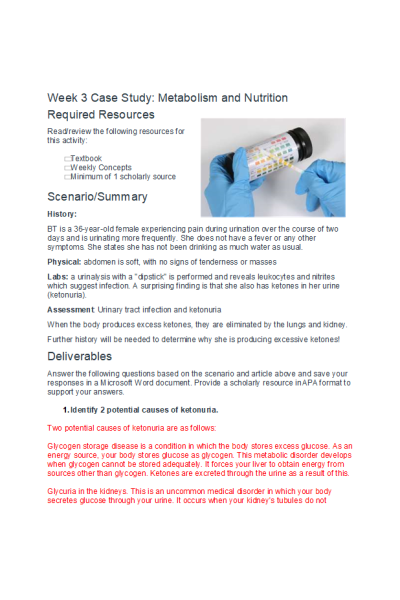BIOS 256 Week 3 Case Study; Metabolism and Nutrition
-
$15.00
| Institution | BIOS 256 Anatomy And Pysiology IV With Lab |
| Contributor | Kimberlee |
OL Lab 2: Intestinal Glucose Transport: Study a mouse intestine model to diagnose an infant
Learning Objectives: Understand the epithelial model for how glucose is transported across the mammalian small intestine Perform a glucose assay method Use an animal model to study the transport of materials across the intestine Describe the effect of sodium-potassium ATPase blocker on glucose transport by the small intestine Explain the effect of manipulations of mucosal concentrations of glucose and sodium on glucose intestinal transport Interpret physiological data and apply to clinical cases In this simulation, you will learn how glucose absorption occurs in the intestine. You will help treat an infant who has trouble gaining weight. She is experiencing diarrhea, with elevated blood sodium concentration and glucose in her feces and urine. Dr. Shaw, your supervisor, suspects this could be related to the poor glucose absorption. You will use a piece of mouse intestine as your model to study intestinal glucose transport and see how your findings can be used to diagnose human diseases. Study glucose transport by measuring its concentration: After clearing out the impurities from the everted intestinal piece, you will expose both the inner (mucosal) and outer (serosal) sides to glucose solutions of different concentrations, a sodium- potassium ATPase blocker, and a sodium-free saline solution. After these treatments, you will measure the glucose levels on both sides, and analyze your data to understand the active glucose transport
| Instituition / Term | |
| Term | Year 2022 |
| Institution | BIOS 256 Anatomy And Pysiology IV With Lab |
| Contributor | Kimberlee |






























